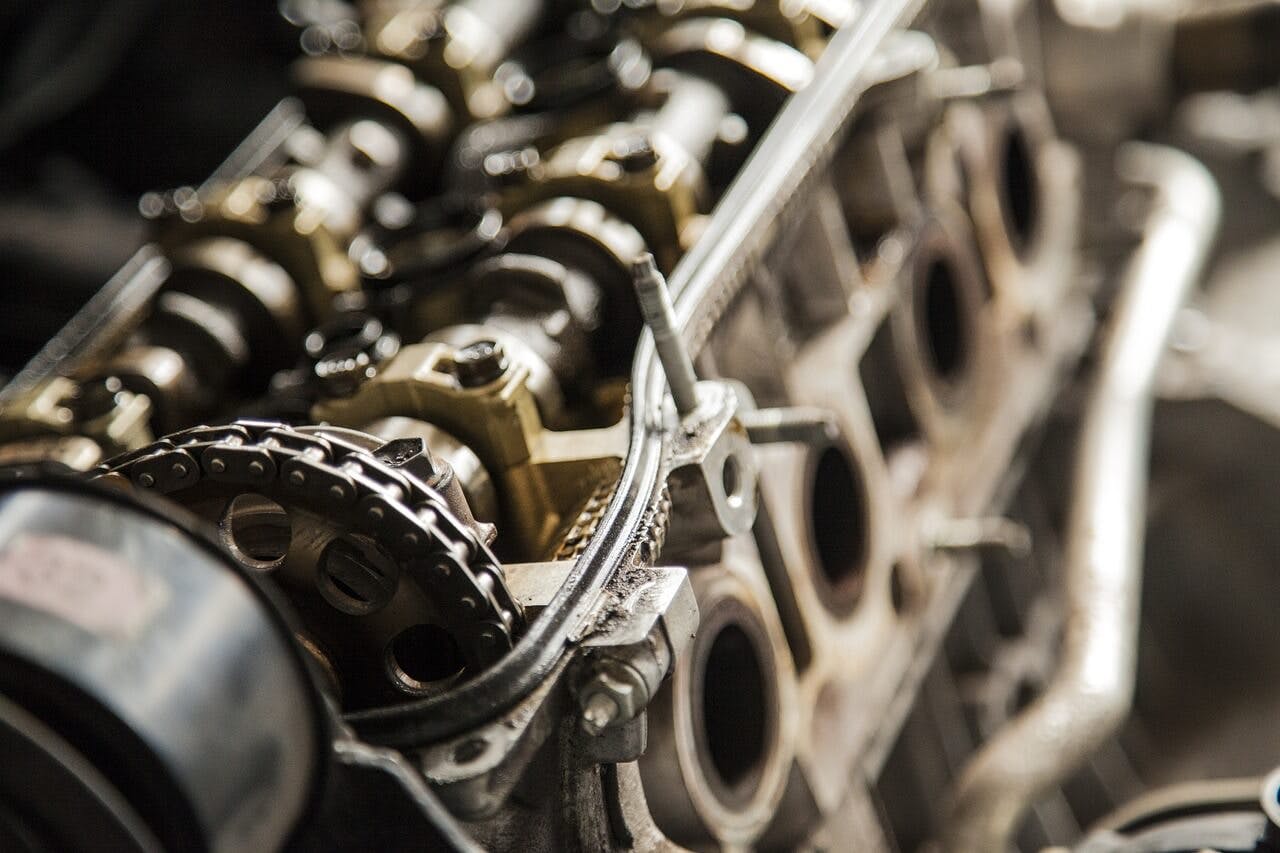OHC distribution: Did you know what type of valve distribution it is?

OHC timing is a type of valve timing of a piston combustion engine, in which, in addition to the valves, the camshaft is also located in the cylinder head. The designation of this type of distribution is derived from the English name OverHead Camshaft.
Usually, only a rocker arm is inserted between the camshaft(s) and the valve. Thus, The OHC distribution contains a few components, which reduce inertial forces. The disadvantage of this type of distribution is only the more complicated construction of the cylinder head.
Spis treści
However, the advantages of OHC valve timing outweigh its disadvantages, which is why this design is currently the most used type of timing for modern piston combustion engines. The basic concept of this type of distribution is one camshaft per cylinder head.
There are two cylinder heads for V-shaped engines, so two camshafts are used (one for each head). An engine with an OHC distribution has at least two valves for each cylinder located in a row and above which the camshaft is located.
OHC distribution can be driven in several ways, either:
- Toothed belt
- Chain
- Toothed gear
The distribution drive is designed to precisely adjust the crankshaft's and camshaft's relative position, which does not change during engine operation. Gear drive is very rare, and nowadays, the most common timing drive is a toothed belt or timing chain.
The OHC distribution is mainly used for four-stroke engines. This means that the camshaft rotates 2x slower than the crankshaft because a four-stroke engine performs one work cycle during two crankshaft revolutions.
OHC distribution can be divided according to construction into:
SOHC (Single OverHead Camshaft) distribution:
Indicates one camshaft per cylinder head. So it is the same type of distribution as the OHC distribution. Most engines of the type use such a valve distribution:
- 4-cylinder engine, eight valves
- 3-cylinder engine, six valves
DOHC (Double OverHead Camshaft) distribution:
It indicates a type of valve train in which two camshafts are located in one cylinder head. With this type of distribution, the intake valves are arranged in one row, and the exhaust valves in the second row. So one camshaft controls the intake valves, and the other camshaft controls the exhaust valves.
This type of valve train is used for larger valves per cylinder (3, 4, 5, 6, and so on). The DOHC distribution is also sometimes referred to as 2xOHC.
The DOHC valve train is the most used type of train today and is used, for example, in the concept of engines such as:
- 4-cylinder engine, 12 valves – 2 intake valves and one exhaust
- 4-cylinder engine, 16 valves – 2 intake valves and two exhaust
- 4-cylinder engine, 20 valves – 3 intake valves and two exhaust
- 4-cylinder engine, 24 valves – 3 intake valves and three exhaust
- 3-cylinder engine, 12 valves – 2 intake valves and two exhaust